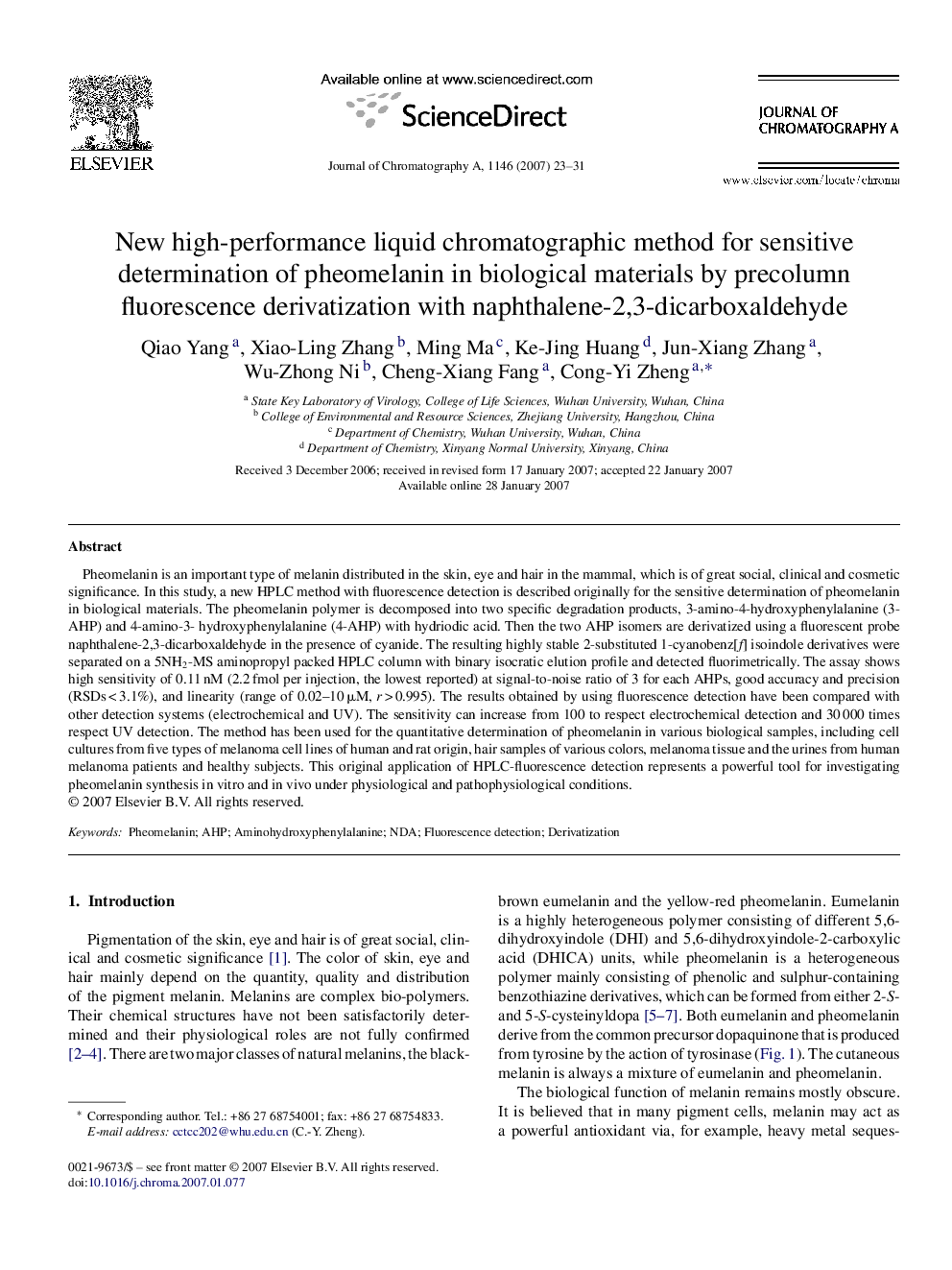| Article ID | Journal | Published Year | Pages | File Type |
|---|---|---|---|---|
| 1209410 | Journal of Chromatography A | 2007 | 9 Pages |
Pheomelanin is an important type of melanin distributed in the skin, eye and hair in the mammal, which is of great social, clinical and cosmetic significance. In this study, a new HPLC method with fluorescence detection is described originally for the sensitive determination of pheomelanin in biological materials. The pheomelanin polymer is decomposed into two specific degradation products, 3-amino-4-hydroxyphenylalanine (3-AHP) and 4-amino-3- hydroxyphenylalanine (4-AHP) with hydriodic acid. Then the two AHP isomers are derivatized using a fluorescent probe naphthalene-2,3-dicarboxaldehyde in the presence of cyanide. The resulting highly stable 2-substituted 1-cyanobenz[f] isoindole derivatives were separated on a 5NH2-MS aminopropyl packed HPLC column with binary isocratic elution profile and detected fluorimetrically. The assay shows high sensitivity of 0.11 nM (2.2 fmol per injection, the lowest reported) at signal-to-noise ratio of 3 for each AHPs, good accuracy and precision (RSDs < 3.1%), and linearity (range of 0.02–10 μM, r > 0.995). The results obtained by using fluorescence detection have been compared with other detection systems (electrochemical and UV). The sensitivity can increase from 100 to respect electrochemical detection and 30 000 times respect UV detection. The method has been used for the quantitative determination of pheomelanin in various biological samples, including cell cultures from five types of melanoma cell lines of human and rat origin, hair samples of various colors, melanoma tissue and the urines from human melanoma patients and healthy subjects. This original application of HPLC-fluorescence detection represents a powerful tool for investigating pheomelanin synthesis in vitro and in vivo under physiological and pathophysiological conditions.
